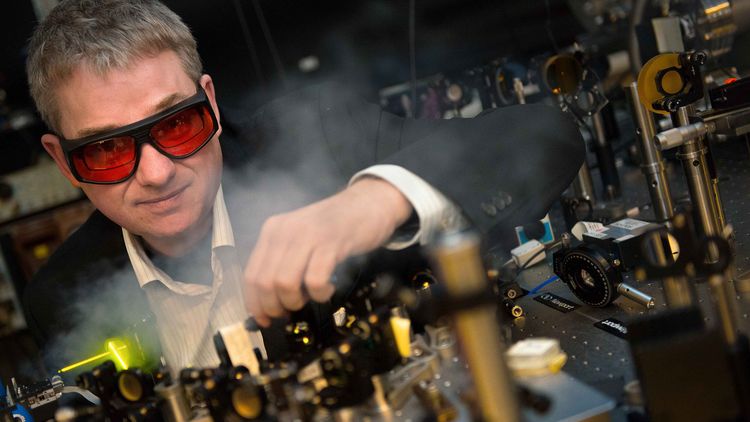German/Italian team of physicists discovers novel nanostructured metallic optical switches.
Conventional computers, as currently in use in every home, are based on semiconductor transistors, switching electronic currents passing through nanometer-sized circuit board traces. In current computers, it typically takes a fraction of a nanosecond to operate these current switches. Much faster operation speeds might be realizable, at least in principle, if we were able to confine and switch light instead of electrons in such circuit traces. So far, however, such “optical computers” exist only in the imagination of scientists, partly because of the enormous difficulty to squeeze light into such small dimensions. Even though much progress has been made in developing nanostructured metallic waveguides for light, e.g, tiny silver or gold wires, efficient switching of light by light could not yet be demonstrated by using purely metallic nanostructures.
Now, a German-Italian team of researchers, headed by Giulio Cerullo from Politecnico di Milano and Christoph Lienau from Oldenburg University, reported an important step towards such nanometric, ultrafast all-optical switches. In the February issue of Nature Photonics, the physicists describe a novel kind of optical switch, comprised of a grating of nanostructured gold wires covered with a thin layer of an organic semiconductor film. „Wenn we illuminate such hybrid structures with ultrafast light pulses“, explains Oldenburg physicist Parinda Vasa, now a professor at Indian Institute of Technology in Mumbay, „the light energy oscillates extremely rapidly back and forth between the gold wire and the semiconductor. Whenever the light reaches the semiconductor, we can switch it off by a second light pulse.“ In these devices, one switching event lasts only for a mere few tens of femtoseconds, ten thousand times shorter than in an conventional electronic computer. Such switches could in principle enable to build computers working at much higher speeds and thus with unprecedented computing power.
„We are making increasing progress in learning how control and manipulate the motion of light on the nanoscale and on exceedingly short time scales“, says Lienau. „Even if we still have to work hard on improving the efficiency and durability of our optical switch, the perspectives for applications are fascinating and now seem well within reach.“
The work in Oldenburg hast been funded by the German Research Foundation (DFG) within the priority program “Ultrafast nanooptics”.

